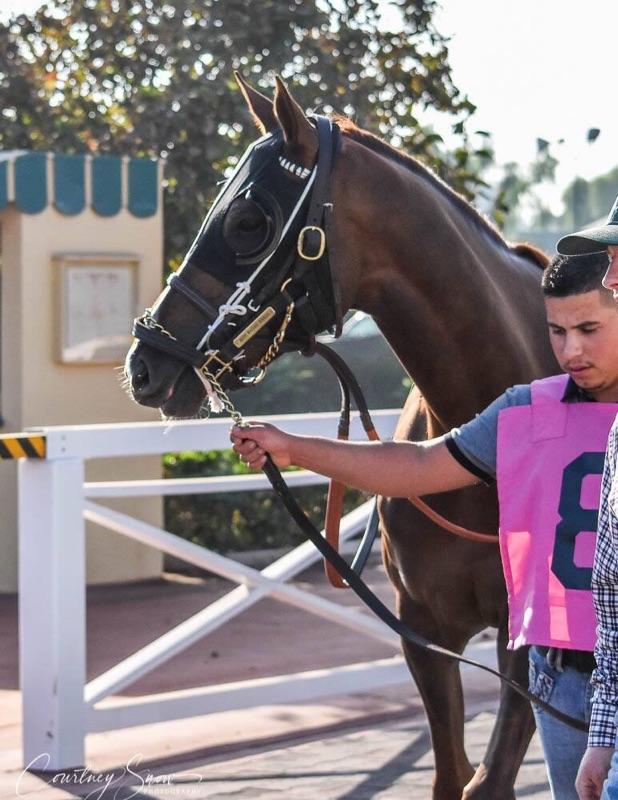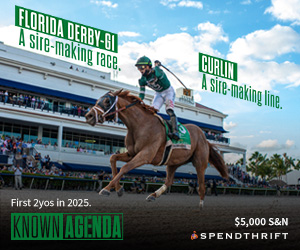
By Steve Zorn
Last week, the Thoroughbred Owners and Breeders Association (TOBA) released its annual listing of the races that will qualify for “black type” and graded-stakes status for 2021. Some 445 races were given grades, of which an even 100 – including 11 Breeders Cup events – will be Grade 1, the highest level in racing. But, as foal crops decline and the number of races in the US steadily shrinks, does it still make sense to have that many races labeled as top-class?
The graded-stakes system was introduced only in 1973, the year after European racing had started its own classification of “group” races. Before that, racing fans just had to use their own intelligence to decide what were the best races. According to TOBA, the purpose of the annual grading is “to provide owners and breeders of Thoroughbred horses a reliable guide to the relative quality of Thoroughbred bloodstock by identifying those races whose recent renewals have consistently attracted the highest quality competition.” More realistically, the purpose of the grading system – and the recent addition of “Listed” stakes races, a cut below those that get actual grades – is to enhance sales offerings by sprinkling the auction catalogues with black type.
The actual grading is done by a TOBA committee made up of six prominent breeders and bloodstock consultants, three racing executives (from NYRA, Del Mar and Keeneland) and the head of the Jockey Club’s data subsidiary. Missing from the mix: racing writers, trainers, and, naturally, racing fans and bettors.
Over the years, the number of graded stakes has crept up from 352 in 1973 to the 445 just tapped for 2021. The number of Grade 1 races has risen even more steeply, from just 63 in 1973 to 100 currently. Some of that increase is attributable to the advent of the Breeders Cup in 1984 and its subsequent expansion – 11 of the Breeders Cup races are now Grade 1s – but the inflation in Grade 1s goes well beyond that.
At the same time that the number of black-type races has been increasing, the North American thoroughbred foal crop and the number of races run annually have been in a steep decline. The following table shows the relation of the foal crop, number of races and graded stakes over the past decades; graded-stakes numbers marked with an asterisk are for 2021, all other numbers are for the years indicated.
| Foals | Races | Graded | Grade 1s | |
| Stakes | ||||
| 1990 | 44143 | 72664 | 451 | 94 |
| 2000 | 37755 | 55486 | 474 | 96 |
| 2010 | 28420 | 46379 | 487 | 113 |
| 2019 | 20800 | 36207 | 445* | 100* |
The chart doesn’t go back to the start of the graded-stakes system in 1973, because data on the number of races run is available only as far back as 1989. Both the size of the foal crop, at 51,296, and the number of Grade 1 stakes, at 116, peaked in 1986. So, while the foal crop and the number of races run each year has decreased by over 50% in the past three decades, the number of graded stakes and Grade 1 races has been rising slightly. Back in 1990, graded stakes accounted for 0.62% of all races run in the US, and Grade 1 races for a mere 0.13% – one out of every 775 races. By 2019, graded races were 1.23% of all races, and Grade 1s were 0.27%, or one out of every 362 races. To put it another way, the fraction of all races that now gets graded status, and the fraction that gets the coveted Grade 1 status, are now twice as large as they were thirty years ago.
Has US racing become that much better over the years? Those of us who remember Secretariat, Seattle Slew, Affirmed and Alydar, Spectacular Bid, John Henry and Kelso might disagree. What seems to have happened in racing is, literally, grade inflation. That reliable multiple winner that would have gotten a B-plus a couple of decades ago can now get an A because there are fewer horse to compete in those graded-stakes spots.
But the grade inflation is even greater than that. We haven’t yet taken into account the steady decline in field size over the years, as horses become more fragile, race fewer times each year and have shorter overall careers. Looking at the same 30-year period, average field size has dropped from 8.91 in 1990 to just 7.5 in 2019 (the last year for which data are available). So, fewer horses per race, more graded-stakes races available per horse: it’s now a lot easier to acquire the black type that stands out in a sales catalogue and, at a minimum, gets prospective buyers to come take a look at the horse before it goes through the auction ring.
What is to be done? There’s no objectively right answer to the question of how many races, to use TOBA’s definition, attract “the highest quality competition.” Is that category one out of every 161 races (graded stakes as a fraction of all US races back in 1990) or is it one out of every 81 races (graded stakes as a fraction of all races today)? It’s unrealistic to expect the breeders and track officials who make up the TOBA Graded Stakes Committee to go all the way back to the ratios that prevailed when they started the system in 1973, but clearly some cutback is in order. How about a simple standard that relates the number of graded stakes to the number of races being run: say, 1% of all races would be graded, and one-quarter of 1% could be Grade 1s, reflecting the change caused by the addition of the Breeders Cup to the annual schedule? If that were applied now, that would mean 360 graded stakes (instead of 445), of which 90 (instead of 100) would be Grade 1s. A relatively modest adjustment, given the far larger change in the number of horses and races, but an easy-to-understand standard that could keep pace with future changes in the game. And if breeders want lots of black type, well, they can just expand that “listed stakes” category to pick up the races dropped from graded status.
Photo Credit: Courtney Snow



